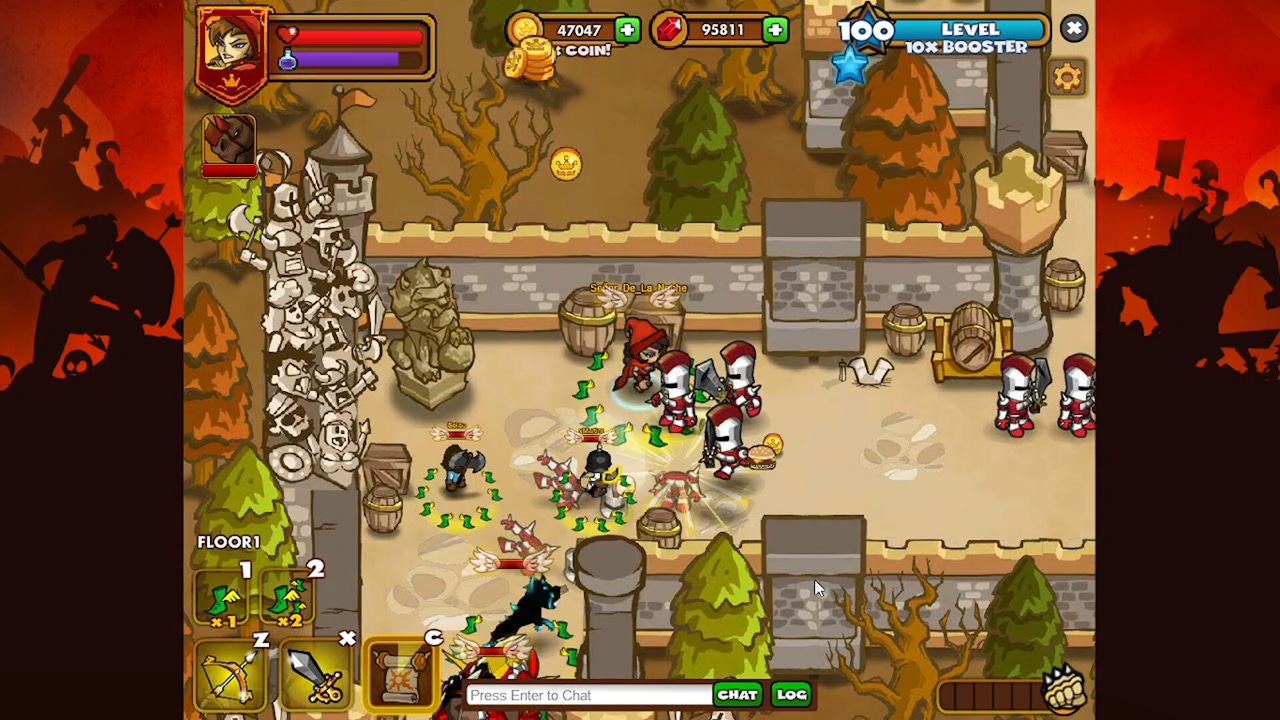Cult Flash game revived after programmer rescues source code from kid’s laptop
How an 18-year old fan led a commendable preservation effort for Dungeon Rampage.
How far would someone go to preserve and resurrect a cult Flash game—especially when you have no experience in game development? That's the question Greek highschooler Angelos Mako faced last year when he set out on a journey to rescue his favorite Flash game Dungeon Rampage, made by Rebel Entertainment. That journey only concluded after tracking down a Dungeon Rampage programmer who'd long ago left the game industry…who had the only existing copy of its source code on a laptop handed down to his child.
Mako's journey reflects the intense preservation effort in the world of Flash games. Ever since Adobe ended support for the animation and game-making technology in 2020, thousands of games were wiped from the internet. Despite preservation efforts, games like Dungeon Rampage vanished into the ether.
Over two million people used to play Dungeon Rampage on Facebook every month. But after a respectable five years of life, the online multiplayer dungeon crawler was shut down in 2017. While some fans attempted to revive it in 2021 via Patreon, lack of access to the game's source code proved things difficult. Now Mako and Gamebreaking Studios are bringing it back.

According to Gamebreaking CEO Taylor Hellam, Mako contacted art and creative directors who worked on the original release, who led him to Rebel Entertainment CEO Mike Goslin. Goslin helped the teen locate the last engineer on the project who was solo-maintaining the title for three years (Hellam witheld the engineer's name out of respect for his privacy).
That was when the engineer discovered he still had a copy of the source code on a hand-me-down laptop he had given to his daughter. Mako then took the unusual step of securing the IP rights to Dungeon Rampage, and contacted Gamebreaking Studios for support. Gamebreaking is now developing and publishing the revived game.
Reviving Flash games like Dungeon Rampage is no simple task
Making it possible to get Dungeon Rampage back up and running has proved to be "quite an archeology project." The title was originally structured like an MMORPG, with Flash being used as a game client connecting to a server-side backend that was responsible for almost everything. When accessing the source code, the team realized the backend was written in an old C++ and PHP code that took a while to work around.
"We’ve since migrated the backend to a fully containerized, cloud-based setup complete with CI/CD pipelines, so we’re able to continuously ship and test new versions at any time," Hellam told Game Developer. "The Flash portion of the game also required several updates to function properly. And getting it working with Steam required significant effort as well."
Hellam said that reviving Dungeon Rampage will require turning the free-to-play game into a premium title—one that will still receive free content updates. It's a signifier of how the free-to-play environment has changed since the heyday of Dungeon Rampage. Modern free-to-play games rely heavily on monetization models like "gacha and lootbox mechanics," as Hellam described them.
The studio is buoying this monetization change with a Kickstarter campaign, meant to fund development
"As the game sells, we’ll be able to set funds aside that we’ll reinvest in development, adding new content and features over time," Hellam said. "Our dream is to keep iterating on this game for many years, guided by community feedback."
Developers continue to foster preservation of Flash games
Flash games have been a surprisingly robust field for preservation. In February 2020, BlueMaxima's Flashpoint introduced itself as a project meant to give over 38,000 games a new home. A month later, The Strong Museum and Kongregate partnered to salvage the tens of thousands of Flash games uploaded to the Kongregate portal, making them available for educational and research purposes.
Over the years, we've seen fan projects riling up for game preservation of not just Flash games. Some notable examples include the Battlefield 2142 Revive project from 2016, bringing back up interest for the 2006 online shooter, as well as user Postbebop recovering Maxis' SimRefinery from a "retired chemical engineering friend," in a similar lucky happenstance as Mako and the engineer.
While preservation efforts are mostly heralded by fans, there is the rare occurrence of a big publisher chipping in. In February of this year, EA shared the source code for several Command & Conquer games on Github, commissioning a modder named Luke "CCHyper" Feenan to help with the restoration.
Yet, preservation projects around Flash games are a standout. They're time capsules of a bygone software platform that spearheaded game developer careers, allowing the teams behind indie darlings like The Binding of Isaac, VVVVVV, and Towerfall: Ascension to create prototypes and participate in game jams before their projects took off commercially.
Moreover, Flash allowed a plethora of people to enjoy games on their browsers, an accessible platform for many players who might not have owned a console or high-end PC—a newly relevant trend thanks to of WebGPU games, which walk in the footsteps laid by Flash game developers.


